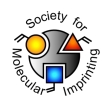
Authors: Altintas Z
Publication date: 2015
Chapter title: Molecular imprinting technology in advanced biosensors for diagnostics.
Chapter number: 1
Page numbers: 1-29.
Alternative URL: https://www.novapublishers.com/catalog/product_info.php?products_id=52907&osCsid=bcdf867f385e9f4704bf0d72cae76d60
Book title: Advances in Biosensors Research
Editors: Everett TG
Publisher: Nova Science Publishers Inc.
City: New York
ISBN: 978-1-63463-675-9 (eBook)
Abstract: The advances in biosensors have improved the current diagnostics profile as giving possibility for point-of-care tests, development of personalised medicine and combination of diagnostics with therapeutics. The most important improvements include biomarker discovery, affinity receptor design, detection of infectious microorganism and disease diagnostics due to close interaction of nanotechnology with other technologies which play critical role for the future of biosensors and health care. Biosensing technology is a fascinating field which provides reliable, rapid and sensitive platforms for specific and ultra-sensitive biomarker-based diagnosis of the diseases such as cancer, diabetes, infectious diseases and neurodegenerative disorders. This technology can also be used for the detection and removal of toxic materials from human body such as cadmium, iron, aluminium and mercury. However, the currently available recognition elements including antibodies, aptamers, DNA or RNA-based probes are not enough to cover all these research works. Hence, there is a need to provide artificial affinity ligands for a wide range of targets detection to improve the efficiency and utilization of biosensors. Molecular imprinting technology is an emerging technology to fulfil this gap in the area which supplies highly stable artificial receptors that show selective molecular recognition characteristics due to the recognition regions within polymer matrix which are complementary to the target in positioning of functional groups and shape. Moreover, the binding affinities obtained for these synthetic receptors are similar to the natural recognition systems such as antibodies. The advances using molecular imprinting are to overcome the drawbacks and limitations of current systems while improving the accuracy of the diagnosis and the development of personalised medicine which play vital role in health care diagnostics. This chapter will cover molecular imprinting technology, the applications of molecular imprinting in the development of rapid diagnostics such as bio-sensing devices for healthcare applications.
Template and target information: Review - MIPs in diagnostic sensors



Join the Society for Molecular Imprinting

New items RSS feed
Sign-up for e-mail updates:
Choose between receiving an occasional newsletter or more frequent e-mail alerts.
Click here to go to the sign-up page.
Is your name elemental or peptidic? Enter your name and find out by clicking either of the buttons below!
Other products you may like:
 MIPdatabase
MIPdatabase









